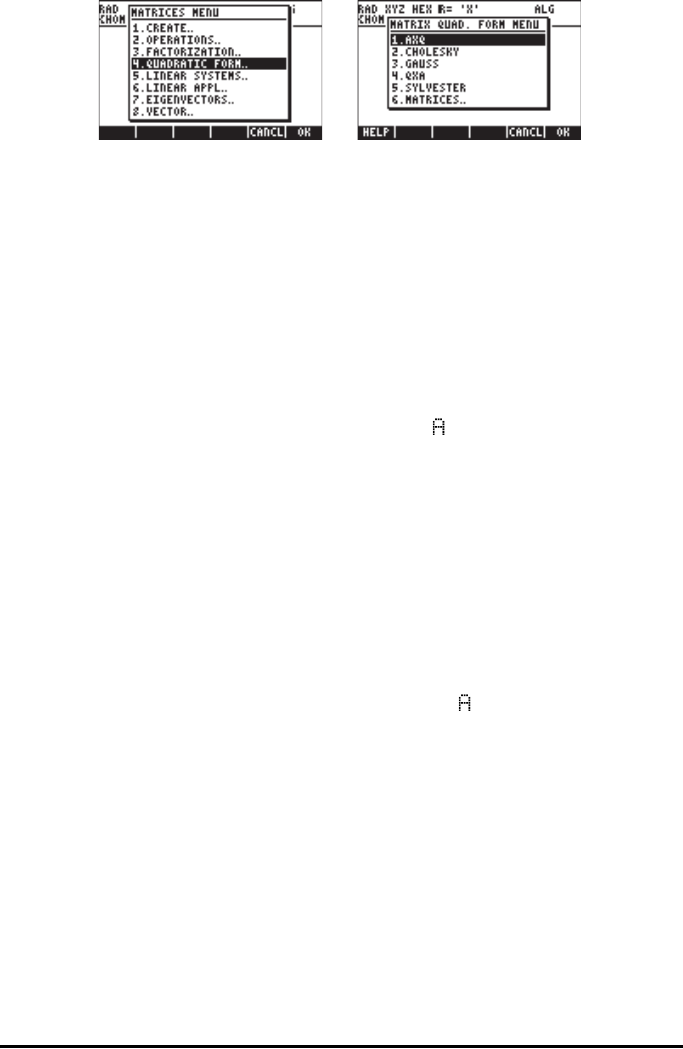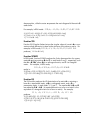
Page 11-53
This menu includes functions AXQ, CHOLESKY, GAUSS, QXA, and SYLVESTER.
Function AXQ
In RPN mode, function AXQ produces the quadratic form corresponding to a
matrix A
n×n
in stack level 2 using the n variables in a vector placed in stack
level 1. Function returns the quadratic form in stack level 1 and the vector of
variables in stack level 1. For example,
[[2,1,-1],[5,4,2],[3,5,-1]] `
['X','Y','Z'] ` XQ
returns
2: ‘2*X^2+(6*Y+2*Z)*X+4*Y^2+7*Z*y-Z^2’
1: [‘X’ ‘Y’ ‘Z’]
Function QXA
Function QXA takes as arguments a quadratic form in stack level 2 and a vector
of variables in stack level 1, returning the square matrix A from which the
quadratic form is derived in stack level 2, and the list of variables in stack level
1. For example,
'X^2+Y^2-Z^2+4*X*Y-16*X*Z' `
['X','Y','Z'] ` QX
returns
2: [[1 2 –8][2 1 0][-8 0 –1]]
1: [‘X’ ‘Y’ ‘Z’]
Diagonal representation of a quadratic form
Given a symmetric square matrix A, it is possible to “diagonalize” the matrix A
by finding an orthogonal matrix P such that P
T
⋅A⋅P = D, where D is a diagonal
matrix. If Q = x⋅A⋅x
T
is a quadratic form based on A, it is possible to write
the quadratic form Q so that it only contains square terms from a variable y,


















